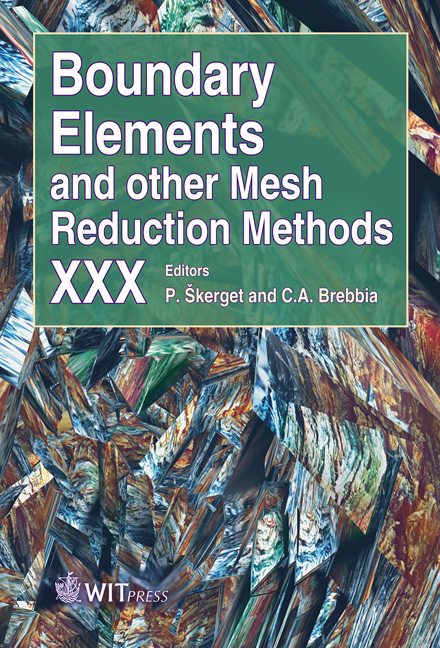Comparison Of Two Solvers For The Extended Method Of Fundamental Solutions
Price
Free (open access)
Transaction
Volume
47
Pages
9
Page Range
191 - 199
Published
2008
Size
375 kb
Paper DOI
10.2495/BE080191
Copyright
WIT Press
Author(s)
R. Gospavic, N. Haque, V. Popov & C. S. Chen
Abstract
In this work two solvers are compared for solution of the system of equations arising from the extended method of fundamental solutions. This method is a combination of the method of fundamental solutions (MFS) and the dual reciprocity method (DRM). The stationary and non-stationary elliptic partial differential equations with variable coefficients are considered. For the nonstationary case a finite difference time discretisation is used. Two sets of basis functions are used, a fundamental solution for the considered operator and a radial basis function (RBF) approximation for the particular solution, in particular the multiquadric (MQ) functions. A direct solver using a high number of digits and an indirect solver based on truncated singular value decomposition (TSVD) were used and compared. The method is tested for different values of the shape parameter in the MQ basis functions. Keywords: meshless, method of fundamental solutions, elliptic partial differential equations, non-stationary problems. 1 Introduction In recent times there has been growing interest in developing various meshless methods for the numerical solution of partial differential equations (PDEs) [1–3]. The major advantage of the meshless methods compared to the traditional numerical methods for solving PDEs is that they avoid the difficulties of meshing the domain and boundary, which is especially beneficial for 3D problems [2]. The use of meshless methods simplifies the geometrical representation of the problem domain and eliminates the need
Keywords
meshless, method of fundamental solutions, elliptic partial differential equations, non-stationary problems.





